Ford Mustang (1999-2004) Service Manual: Camber and Caster Adjustment - Front
All vehicles
1. Remove the rivet. Loosen the nuts and bolt.
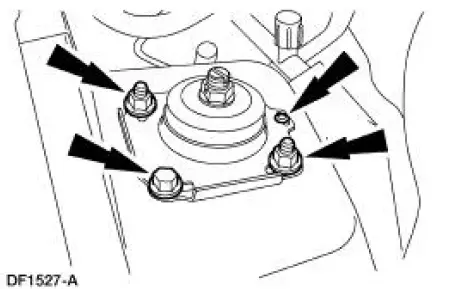
Vehicles requiring camber adjustment
2. Move the front suspension camber adjusting plate (3B391) to the required camber setting.
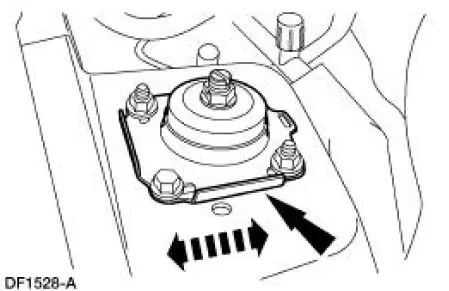
Vehicles requiring caster adjustment
3. NOTE: If caster adjustment is necessary to resolve a pull, or out of specification cross-caster split, then slotting the shock tower at the front shock absorber (18124) upper mounting point is an acceptable method. This procedure should not be routinely performed with all alignments and only after all other possible sources have been inspected and corrected as necessary.
Determine the amount of caster adjustment needed.
- If no more than 0.6 degree is needed, only one shock tower needs to be slotted.
4. Mark the camber position of the front suspension camber adjusting plate (3B391).
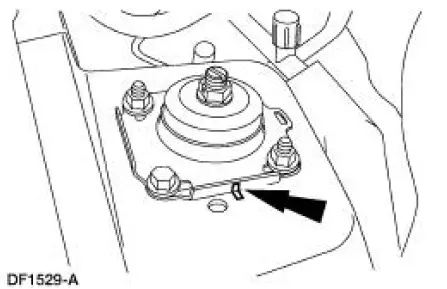
5. Remove the nuts, bolt and the front suspension camber adjusting plate.
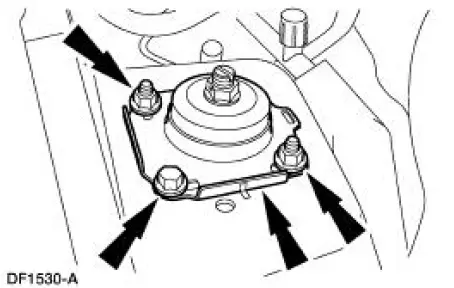
6. Raise the front end. Position the strut and spring assembly out of the way. 7. Cut slots perpendicular to the existing camber adjustment slots.
- Moving the top of the front shock absorber toward the rear of the vehicle will increase the caster reading for that side.
- Each millimeter of adjustment should yield approximately 0.12 degree of caster change.
- Do not cut slots any longer than 5 mm (0.2 in.) in any direction.
- Remove any burrs.
- Clean and paint any exposed metal.
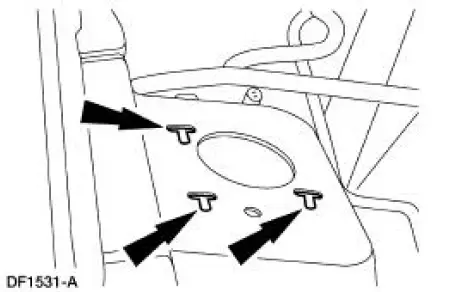
8. Position the strut and spring assembly. Lower the front end.
9. Install the front suspension camber adjustment plate, bolt and nuts. Hand tighten the bolt and nuts.
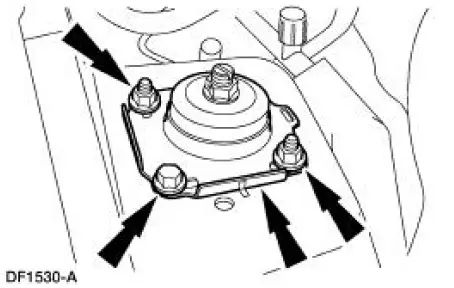
10. Align the camber marks and position the front suspension camber adjustment plate at the correct caster setting.
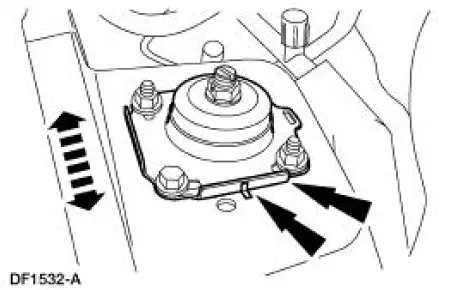
All vehicles
11. Tighten the nuts and bolt.
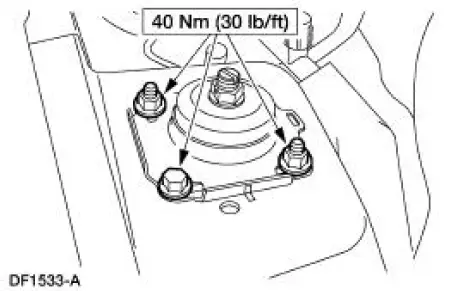
12. Recheck the wheel alignment. Follow the manufacturer's instructions. Adjust as necessary.
 Component Tests
Component Tests
Ball Joint Inspection
1. Raise and support the vehicle.
2. Prior to performing any inspection of the ball joints, inspect the wheel
bearings.
3. Position a safety stand beneath the front suspension ...
 Camber Adjustment - Rear
Camber Adjustment - Rear
1. Loosen the nut.
2. Rotate the bolt and the cam to the correct camber setting.
3. Tighten the nut while holding the bolt and the cam stationary.
4. Recheck the wheel alignment. Follow the manu ...
Other materials:
Evaporator Core Housing
Disassembly
1. Remove the evaporator core housing. For additional information, refer to
Evaporator Core
Housing in this section.
2. Remove the foam weather seal.
3. Remove the screws and remove the heater core.
4. Remove the screws and remove the A/C rec ...
Inspection and Verification
WARNING: A vehicle equipped with a Traction-Lok differential will
always have both
wheels driving. If, while the vehicle is being serviced, only one wheel is
raised off the ground
and the rear axle is driven by the engine, the wheel on the ground could drive ...
General information on radio frequencies
This device complies with part 15 of the FCC Rules and with Industry
Canada license-exempt RSS standard(s). Operation is subject to the
following two conditions: (1) This device may not cause harmful
interference, and (2) This device must accept any interferen ...
